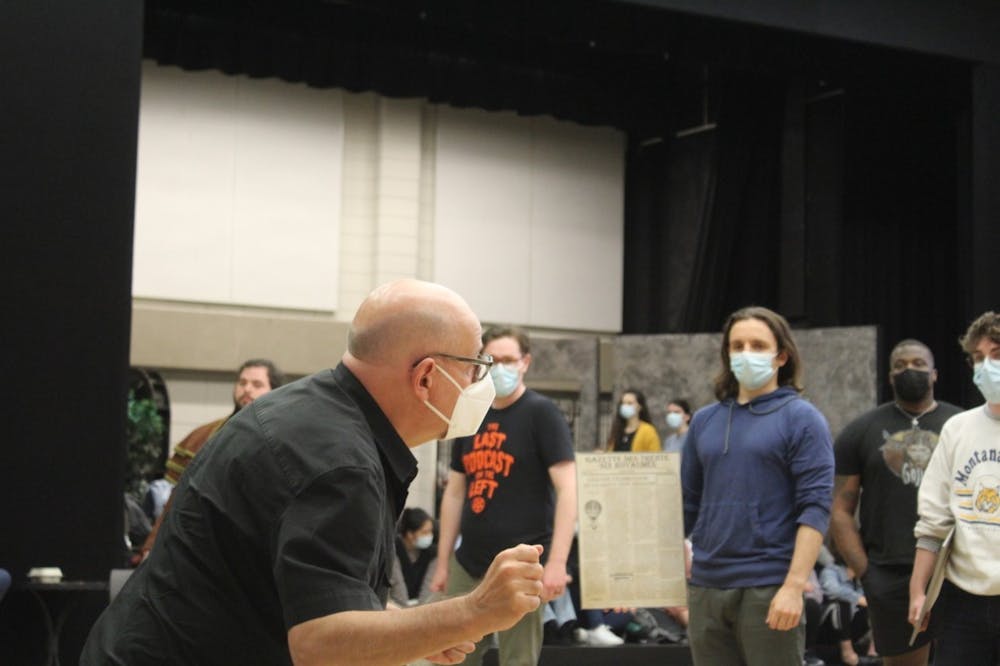The Musical Arts Center will open its second opera of the fall season with Emmanuel Chabrier’s “The Lucky Star,” otherwise known by its original French name, “L’Étoile.” The production will be directed by acclaimed French-Canadian director Alain Gauthier.
Performances will be held at 7:30 p.m. Oct. 21-22 and Oct. 28-29.
Gauthier has returned to IU to stage another version of “The Lucky Star,” the first opera he directed at the school. Among his many acclaimed productions, “Gianni Schicchi” and “Dead Man Walking” won an Opus prize at the 25th Opus Awards. The IDS spoke with Gauthier about his role as director at the Musical Arts Center on Oct. 10.
IDS: Your last collaboration with IU was five years ago. How did you get started with the Jacobs School of Music?
Gauthier: I did this piece, “L’Étoile,” translated here as “The Lucky Star” before. The New York City Opera wanted me to remount the show with the original director, so they called me to New York. I was in charge of remounting both versions and that’s how I met Kevin Murphy, who was in charge of music at the Jacobs School of Music — and they wanted to do the same production. Unfortunately, the production was destroyed because when it isn’t used after a while, it gets scrapped.
They asked if I would agree to come and do a new production of “L'Étoile” and I said, ‘oh absolutely.’ I knew the piece very well and loved the type of music.
Related: [Student vocal ensemble ‘NOTUS’ to bring recorded music to a new digital era]
IDS: You worked with opera companies prior, so what was it like working in this new environment initially?
Gauthier: I didn’t suspect that IU would have such a big music and opera department with so many ways to put the show on stage. The size of the theater and the quality of the sets, costumes, and props — it’s like it would be in a professional opera house. They introduced me to a New York set designer, so we sent each other photos and then decided on the direction for the creation of the set.
IDS: How did you go about redesigning the show after the original production was scrapped?
Gauthier: I wanted to do something original and different. My challenge was to not fall into the trap of doing what I had done with the original New York production. But unconsciously, I put some of the elements that were in that into this one and now I’m going ‘that’s the exact same move that we did years ago.’ But it’s different — it’s not the same aesthetic and we try to have fun with all of it.
IDS: How is your production different?
Gauthier: The first one I did was not mine. It was very crazy and over the top — but the show calls for that, so we wanted to keep that spirit.
I went back to the creation of the piece at the end of the 19th century, and it was a very interesting moment in history. It was the Industrial Revolution, and you had the Eiffel Tower and railways — all this metal work. That was part of the inspiration, which reminded me of the steampunk aesthetic, which is a mix of 19th century fashion with industrial pieces on the cloth. We went in this direction, but with a lot of color. The people are very earth-toned and industrial. When we move to the court it’s very “French French,” with white wigs, white makeup and lace but in a creative and crazy way.
IDS: Could you expand on how your cultural roots influence your performers?
Gauthier: I try to explain to the singers that even though most people here don’t understand a word of what they sing, they still have to get the right French in their mouth. The spoken part is in English with a lot of French words, which was something I added to keep the French color in the show. When they sing it’s all French and sometimes it’s very difficult, but the conductor and I insist on being respectful of diction because it’s going to bring the singing where it needs to be. I think I can give the singers a better comprehension of what they’re singing and of their character type.
IDS: So, you help them better understand the inherent poetry of a different language?
Gauthier: Yes, exactly. And some expressions don’t make sense if you don’t pronounce them correctly, so I can explain it. They do their research, but it’s still hard to understand so that’s where I help them be better performers.
Related: [Bloomington Ballet Ensemble strives to make the art form more accessible]
IDS: What are you hoping audiences will take away from this production?
Gauthier: It’s a feel-good show and I hope they walk out feeling lighter. We’re going through difficult times right now, so I think two hours of laughter and craziness is something that will be good for everyone’s souls. There are no philosophical questions. It’s just laughter, jokes and pretty arias, so it’s good entertainment for everyone.




